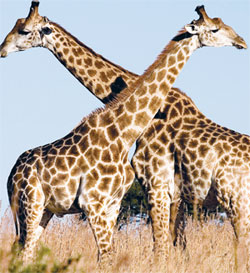By JOE OMBUOR
The civil war in Somalia has resulted into an influx of refugees into northern Kenya, which has had a negative effect on wildlife.
Dadaab in Garissa District hosts 440,000 refugees and it is the largest concentration of the displaced in the world.
The area has three refugee camps, namely Ifo, Dagahaley and Hagadera and there are already plans to open Ifo II to host refugees escaping famine and violence in the wartorn country.
The country has not had a stable Government after the ouster of President Siad Barre in 1991.
Hosting such a high number of refugees has had some negative effect on the people of North Eastern Province and the country. Wild animals have not been spared either.
Some of the refugees who escaped into Kenya smuggled firearms into the country which they use to poach to supplement their food.
Felling of trees to put up makeshift shelters and the increased demand for wood fuel has also greatly destroyed wildlife habitats.
It is these activities that led to some wildlife migrating to safer areas around Garissa Town and the Tana riverine in the late 1990s.
The area boasts of lush vegetation and adequate water supply, thanks to the River Tana.
Sanctuary is born
With time, the area became a haven for giraffes and other browsers such as gerenuk, dik dik and lesser kudu.
First to arrive at the sanctuary was a colony of 30 giraffes, some of which, residents say, had bullet wounds.
With adequate protection and abundance of acacia trees around Bour Algi area close to the town, more giraffes streamed in, leading to village elders mooting the idea of establishing a sanctuary.
The co-founder of the sanctuary aptly named Giraffe Conservation Foundation, Abdullahi Hussein Ali, the facility, which was started in 2000, covers about 125sqkm in Garissa County.
Stay informed. Subscribe to our newsletter
He says the establishment of the facility and bolstered security saw more giraffes troop to the sanctuary.
"The giraffe population at the sanctuary increased fast, leading to recognition by the Kenya Wildlife Service," says Mr Ali.
Ali has also been spearheading efforts to sensitise the Somali community on the importance of taking care of the facility.
"I have worked with the locals here for the past five years to ensure they continue to support and accommodate giraffes," he says.
His efforts have seen the foundation train community scouts on wildlife and conservation techniques.
Long-term conservation
"I am working hard to foster long-term conservation through education and outreach," he told The Standard On Saturday.
He says human encroachment, infrastructural development, charcoal burning, and sand harvesting are some of the challenges facing the sanctuary.
The biologist also laments that a sewerage project in Garissa has polluted breeding and feeding sites, fueling migration of giraffes to unsafe areas.
He also decries the continued blockage of dispersal routes and water corridors through expansion of farmlands.
Ali criticises the National Environment Management Authority (Nema) for sanctioning the sewerage project, which he says is a major threat to the sanctuary.
"We question how the National Nema approved such a project to be carried out in giraffe concentration area," poses Ali, who is also a researcher.
Sustainable measures
Ali warns that the sanctuary could be lost altogether if long-term measures are not instituted to protect it and also make it sustainable.
"Tourism related infrastructure and environmental education need to be put in place and bylaws governing the sanctuary strengthened," he says.
Ali, who was born in Garissa, has been involved in many conservation projects in North Eastern Kenya and western Somalia.
Besides the giraffe sanctuary, he was involved in the establishment of the Ishaqbini Hirola Conservancy where he researches on the conservation of the IUCN Red-Listed hirola (Beatragus hunteri), one of the most endangered antelopes in the world.
 The Standard Group Plc is a
multi-media organization with investments in media platforms spanning newspaper
print operations, television, radio broadcasting, digital and online services. The
Standard Group is recognized as a leading multi-media house in Kenya with a key
influence in matters of national and international interest.
The Standard Group Plc is a
multi-media organization with investments in media platforms spanning newspaper
print operations, television, radio broadcasting, digital and online services. The
Standard Group is recognized as a leading multi-media house in Kenya with a key
influence in matters of national and international interest.
 The Standard Group Plc is a
multi-media organization with investments in media platforms spanning newspaper
print operations, television, radio broadcasting, digital and online services. The
Standard Group is recognized as a leading multi-media house in Kenya with a key
influence in matters of national and international interest.
The Standard Group Plc is a
multi-media organization with investments in media platforms spanning newspaper
print operations, television, radio broadcasting, digital and online services. The
Standard Group is recognized as a leading multi-media house in Kenya with a key
influence in matters of national and international interest.






